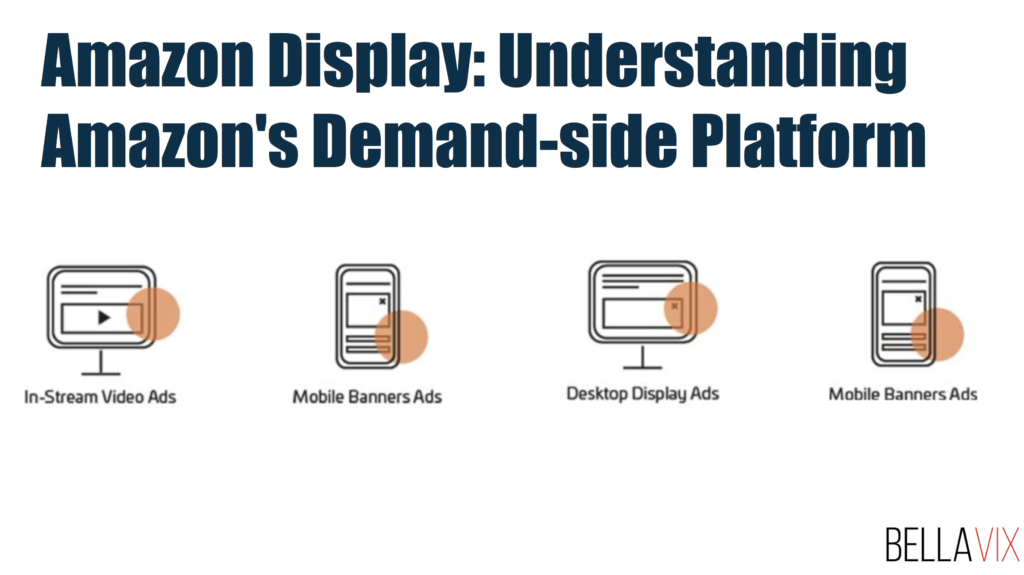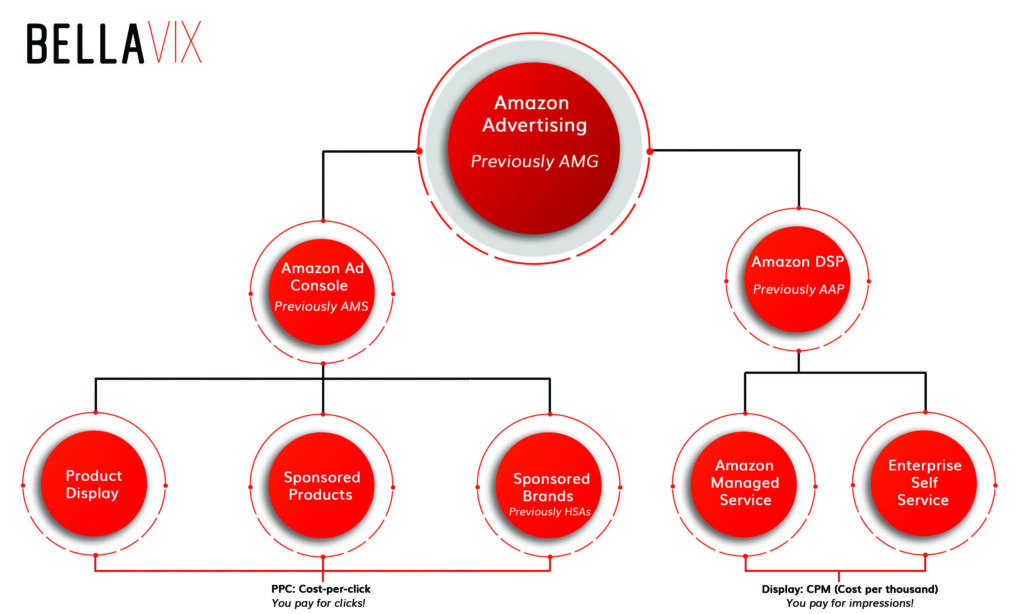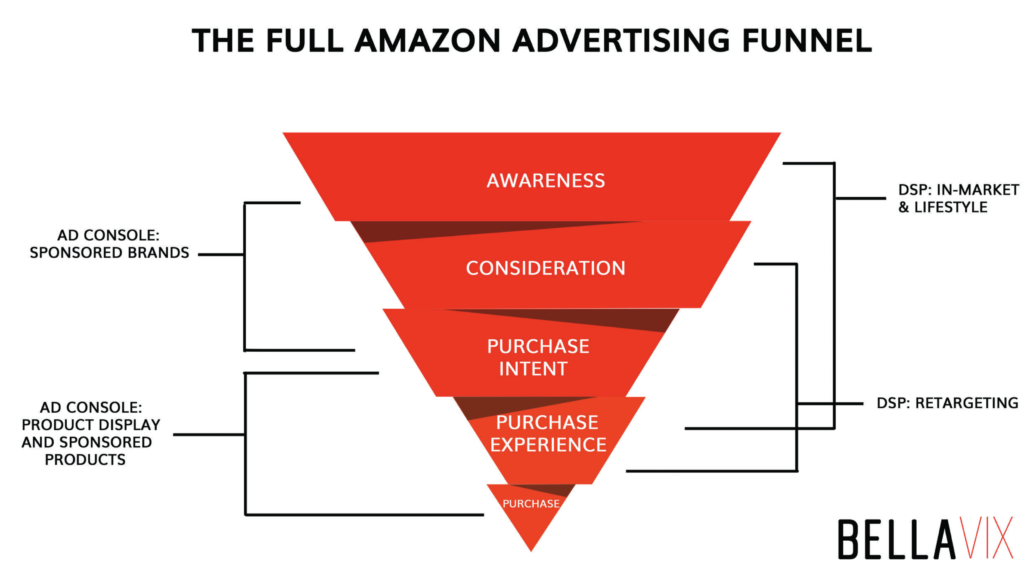
Amazon Demand-side Platform (DSP) is a Display Advertising Platform that allows us to programmatically reach relevant audiences on Amazon sites and apps as well as publishing partners on third-party exchanges. Before we dive into DSP it’s important to understand some of the fundamentals of programmatic advertising.

Programmatic Ads
Programmatic advertising is the buying and selling of digital advertising placements on websites, mobile applications, and more. Programmatic advertising uses pricing based on a dynamic Cost per Thousand (CPM) model. A dynamic CPM allows advertisers to automatically adjust the price of their bids based on factors like inventory, competition, time of day or seasonality, all factors that influence the spend and value of a particular placement. As opposed to a fixed CPM model which is based on a fixed price per bid. The technology behind programmatic advertising allows us to bid more efficiently in order to reach our campaign goals. Some of the unique features of programmatic advertisements are;
- The buying process is automated
- Supply is generally not guaranteed (competition affects price)
- Advertisers bid on impressions in real-time to deliver an ad to a specific audience
- Pricing is based on a dynamic pricing model
A Major Benefit of Programmatic Advertising:
- Increase efficiency by allowing advertisers to serve impression at the right time, to the right audience, cutting down on ad waste.
Amazon Display (DSP)
The Amazon Demand-Side Platform (available within Amazon Advertising Services) enables advertisers to programmatically buy display & video ad placements. It also allows advertisers to reach, educate, and re-engage customers on and off Amazon.
There are two sides to Amazon Advertising including the Advertising Console and Amazon DSP — one is geared towards PPC (pay for clicks), and one is geared towards Display (pay for impressions).
The Amazon Advantage
Amazon has the largest database of actual shopping and media consumption behavior from its billions of regular users. Consider Amazon is the largest eCommerce platform in the US generating 50% of all eCommerce sales and 5% of total US retail. As of 2019, 103 million Americans have a Prime Membership that spend roughly $1,400 per year on average where as non Prime Members spent $600 per year.
Amazon has the largest database of online shoppers in all stages of the customer journey across hundreds of retail categories. Amazon is building a way to easily integrate data into a multi-touch experience that allows marketers to better define segments and target potential customers through an omnichannel approach which is dramatically different than Google or Facebook. Amazon’s data is based on known shopping history.
It tracks behavior at the bottom of the funnel because of the nature of the platform as opposed to Google which uses Browser data and Facebook which uses social data i.e. likes and shares. This is the true value behind Amazon DSP.
Benefits of Amazon DSP
There are a number of benefits to using Amazon DSP, from exclusive first-party insights to brand safeguards.
- Amazon exclusive first-party insights
- Amazon DSP enables advertisers to leverage Amazon’s first-party insights based on billions of observed shopping patterns across the customer decision journey. We believe these insights are the best predictor of future purchases.
Precise targeting across devices and formats
- Amazon DSP enables advertisers to build cross-device campaigns, which is essential today given how cross-device shopping is the new normal.
- Advertisers can achieve marketing goals by reaching Amazon shoppers at scale wherever they are: whether they are on or off Amazon.
- To reach the most relevant audience, advertisers can leverage both Amazon’s audiences and their own audiences, such as by using a pixel or data management platform (DMP), in their campaigns with Amazon DSP.
Comprehensive and unique supply
You’ll remember that in the world of programmatic advertising, “supply” is the inventory that a publisher has available to monetize, or the actual impression of a user viewing an advertisement on a web page. So Amazon’s “unique supply” is the impressions that advertisers can access through the DSP that they cannot access via other DSPs.
To boost targeted reach of Amazon shoppers whenever and wherever they shop or consume content, advertisers can access comprehensive and unique inventory from Amazon owned-and-operated (O&O), 3P exchanges, Amazon publisher services, and private marketplaces.
Audience Insights & Performance Analytics
The DSP provides audience insights and robust performance analytics pre-, during, and post-campaigns.
Amazon’s deep reporting analysis includes key metrics such as add to cart rate, total purchases, and product units sold (for brands that sell on Amazon).
Amazon Display Networks
Amazon DSP accesses inventory from these three sources:
- Amazon owned & operated (O&O) properties
- Amazon Publisher Services (APS)
- Third-party (3P) exchanges
Amazon DSP programmatically delivers ads across our owned-and-operated sites and apps such as Amazon.com and IMDb. Additionally, advertisers have access to direct inventory from leading publisher sites through Amazon Publisher Services as well as large third-party exchanges. This inventory includes high-quality sites on desktop and mobile web display, mobile app, and video pre-roll.
Leveraging Amazon Display
Amazon DSP can be used to;
Upper-funnel – Improve Visibility & Brand Awareness
Attract attention to your brand
Mid-funnel – Increase Consideration
Consider your product over a competitor
Low-funnel – Drive Purchases (highest intent)
Re-engage customers to win back the sale
Should I Budget for Amazon Display?
Amazon Display is perfect for any brand trying to increase the demand for their product and drive consistent year-over-year growth through new customer acquisition and retention on Amazon. When coupled with the Amazon Ad Console, Amazon Display becomes an invaluable tool in driving sessions and awareness on new and existing products.
When you invest in both platforms, you are covering the entire sales funnel: retargeting, in-market, lifestyles, and contextual audiences ranging from high-intent to general brand awareness. According to Amazon, search and display ads together increases the demand for a brand’s products by over 100%, increases total sales by as much as 30% and increases ROAS by as much as 160%
Are you currently using Amazon Ad Console and feel you’ve plateaued on the platform. Do you wonder what impact Amazon Display could have on your bottom line? Contact BellaVix today for an assessment.
Keep up with the latest Amazon and Walmart news updates and subscribe to our BellaVix newsletter 👇👇👇


